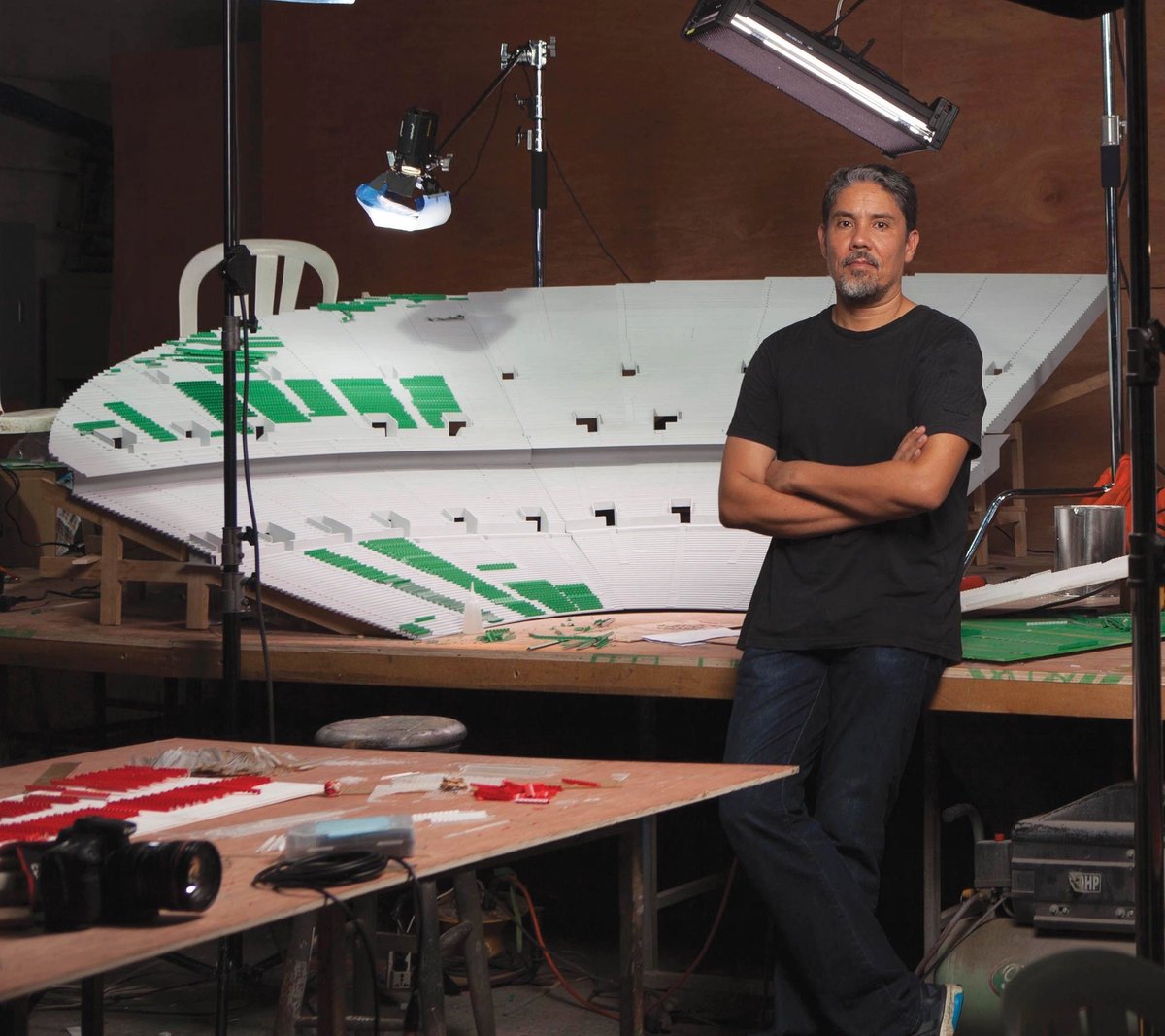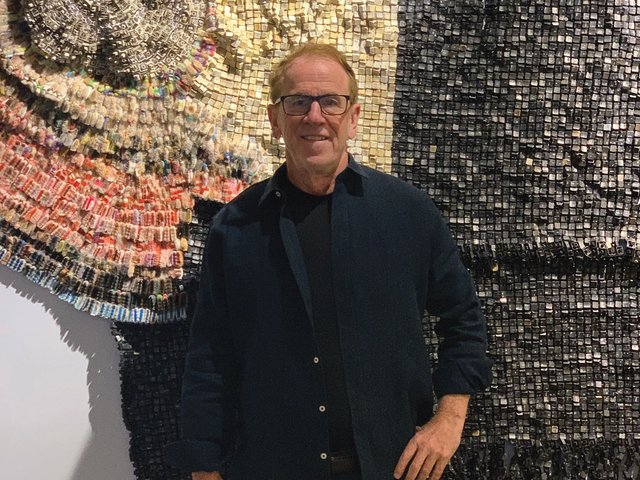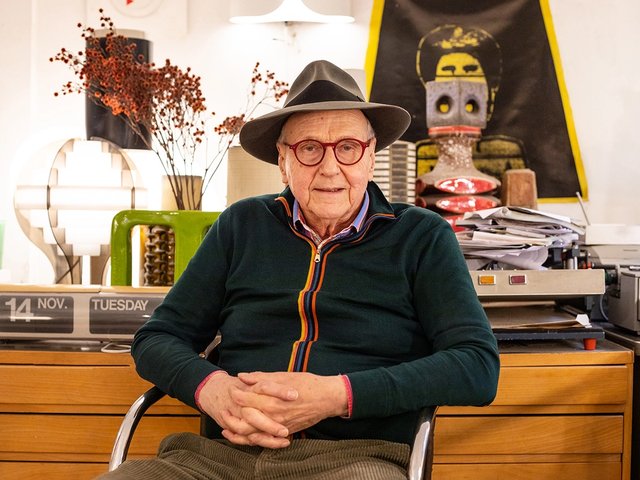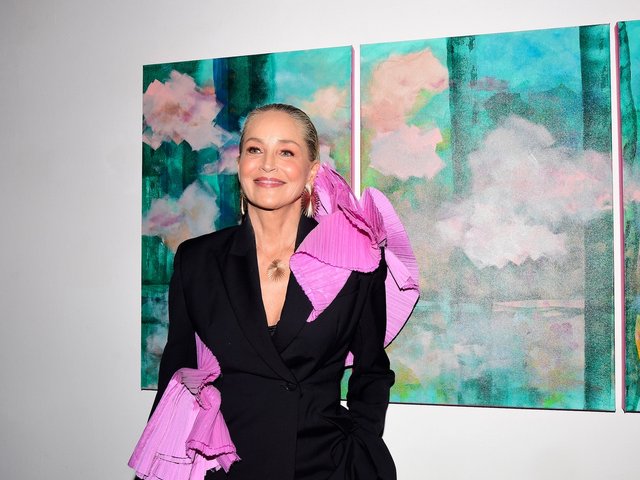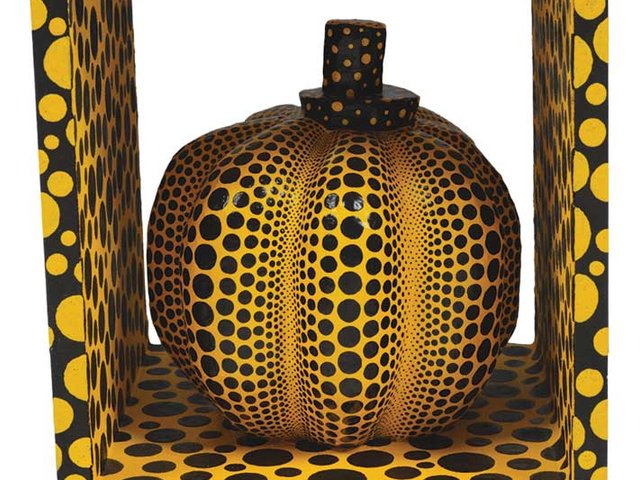The Museum of Contemporary Art’s retrospective of 25 years of Paul Pfeiffer’s wide-ranging, multi-disciplinary practice foregrounds the confluence of pop culture, identity and the spectacle. Through the precise editing and assembling of found imagery, Pfeiffer’s work turns the familiar in on itself, emphasising the desire, projection and manipulation at the heart of mass media. The Art Newspaper spoke to the Hawaii-born, New York-based artist about the themes and techniques central to his work.
The Art Newspaper: Is there a particular way you design and establish the relationship between your work and its viewers? Do the pre-existing connections between works of mass culture and their audience provide a model for you to reinterpret?
Paul Pfeiffer: My attraction to the images I use in my work comes from the fact that they have already been circulated. They’re preloaded with meaning and they’ve already proven they have a capacity to speak to an audience. I try to hack into that pre-existing economy I imagine to be out there and interact with these images which had a formative place in the psychic landscape of my youth. It’s difficult to ascribe that meaning to another person, but I imagine that these things speak the same way to others that they speak to me.
Sports images necessitate thinking about audiences differently, especially because I’m not coming to them as a sports fan
Sports images necessitate thinking about audiences differently, especially because I’m not coming to them as a sports fan. Of course, I have a general awareness that these scenes are cultural phenomena involving tens of thousands of people, but, beyond that, I approach my own use of the images with a certain amount of distance from that context. I view myself as an outsider, or like an alien viewing the scene with an abstract or anthropological eye. Playing back and cutting these scenes gives a very different feeling to seeing a scene play back in real time, in a way that makes sense in a highly intuitive, non-conscious way.
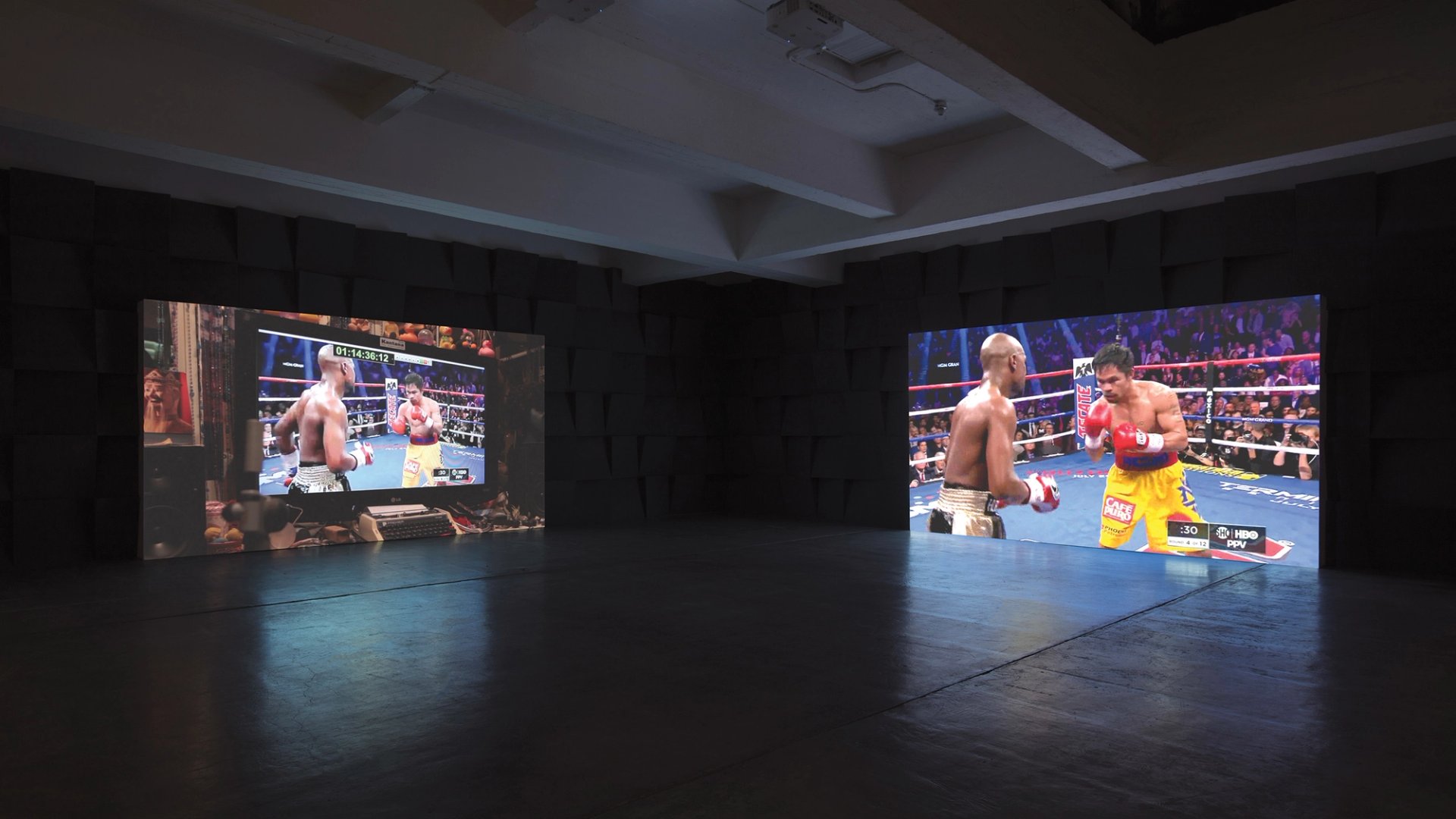
Match fit: Pfeiffer works in many media, but mostly referencing sporting venues, events and participants, including a boxing-themed video installation, Three Figures in a Room (2015-18) Courtesy of the artist and Paula Cooper Gallery
You can see how the reception of these things on an emotional level has consequences and intersects with a purposeful agenda to, say, create intensifying feelings of group identity. While a certain inherited definition of radical image-making would instruct breaking it down analytically and cutting through the illusion, that would only go so far for me. It’s more interesting to think about using the same skill set as the directors and editors responsible for the images do, while at the same time misaligning things that would previously be seamlessly produced.
It’s important that my work makes you become aware of the act of looking, of experiencing a thing. I want to preserve the intensity of the image without having it lead to any desired effect besides an awareness that one can choreograph the senses in this way. The links between the experience and memory and identification should be clear.
How do you approach erasure and negation as positive features of your compositions?
I made my first video in 1998. In the next few years, there was a very rapid development in my experiments with moving images. Playing with the image and producing something similar to erasure was something that came out of using the digital tools at the moment that they were being introduced. To me, Photoshopping elements from the background on top of the foreground figure, or disguising the foreground figure to help them blend into the background, describes camouflage more than erasure, and seems like a gesture absolutely native to the digital tools that were emerging at the time. My first use of Photoshop was meant to highlight a figure rather than erase it, in part due to the inherent difficulty of trying to perfectly get rid of surrounding features. Through the process of editing a moving image and failing over and over, I took a step back and began to see that imperfections in the background were like ripples, caused by removing elements to help a central player stand out. In my next video I started to play with the ripple itself as a subject, and came to see it as a gesture with ambiguous and productive means for confusing foreground and background elements.
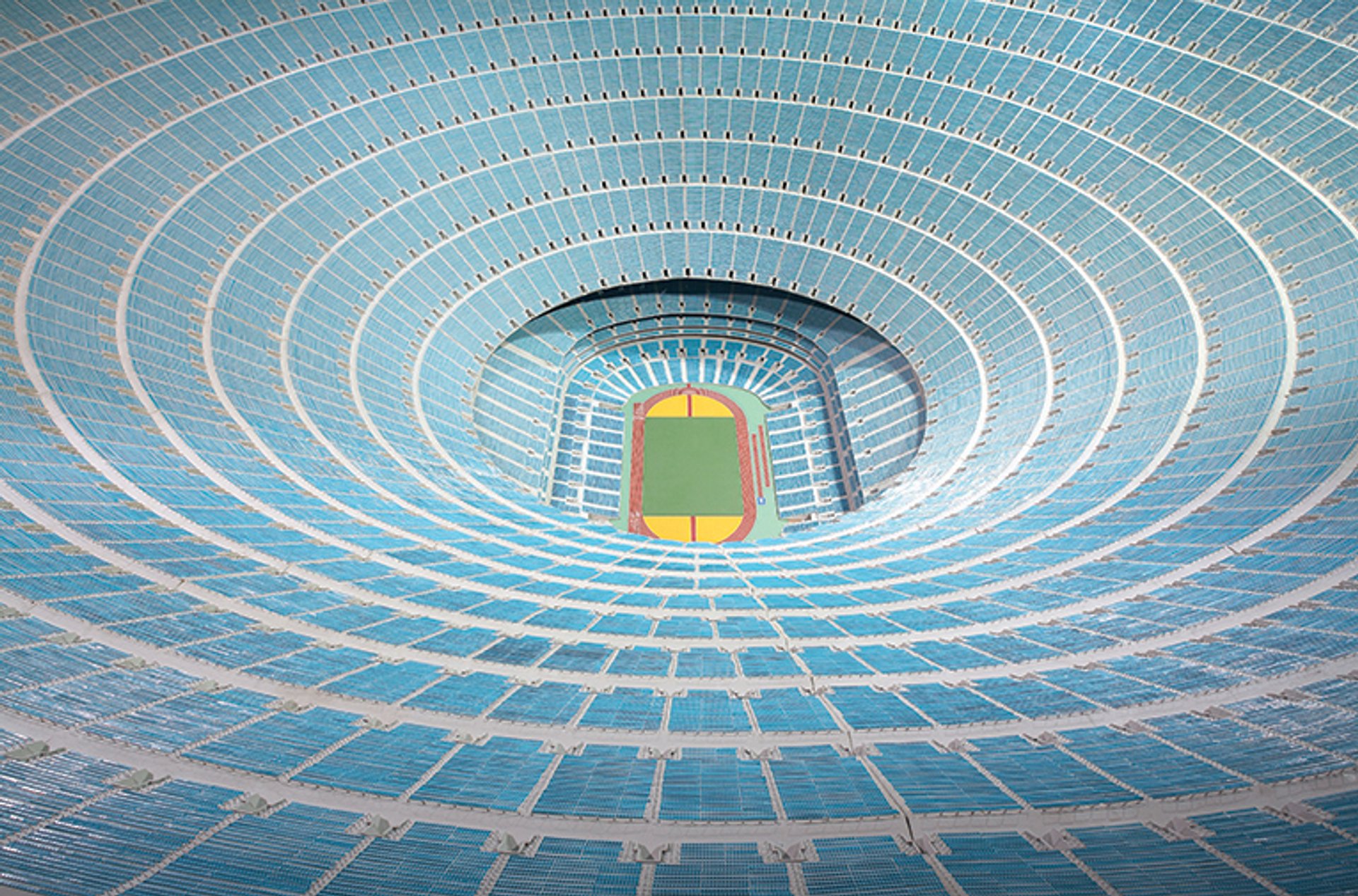
Vitruvian Figure (2008), Pfeiffer's cast resin sculpture of a stadium Photo: Christian Capurro; © Paul Pfeiffer; Courtesy the artist; Paula Cooper Gallery, New York; Carlier | Gebauer, Berlin/Madrid; Perrotin; and Thomas Dane Gallery, London
Is the stadium the central object of your interest in the infrastructure of mass culture? In an age of digital and largely invisible media networks, what is so captivating about the public arena?
The stadium visualises something that, in the larger context, is purposely made invisible. When you think of infrastructure, the most common aspects you consider are parts of the social environment that are purposefully put in the background—the plumbing and electrical wires that run underground. Their effectiveness is tied to their position out of the way, where they can’t be seen. Stadiums, however, are a model for the kind of mass infrastructure that exists in media culture and are the one place where we can see ourselves in the formation. In most other cases, such things are purposefully tucked away, so that they can work more effectively on a subliminal level.
My general fascination with what goes on in the stadium is heightened in some ways by not being a sports fan. Observing this phenomenon of very extreme group emotion, while knowing that it is cultivated, is interesting as an editor, and the intentional combination of images, sound and sequences seems very similar to what I do in the editing room when I’m playing with footage. The Saints (2007) was an experiment with prioritising the sound of the crowd while also detaching it from its original scene. The piece, which draws images from an archival recording of the 1966 World Cup final between England and West Germany, was an opportunity to intensify rather than destroy the illusion created by conventional broadcasts, using editing techniques to produce a heightened effect like an event director or advertiser would.
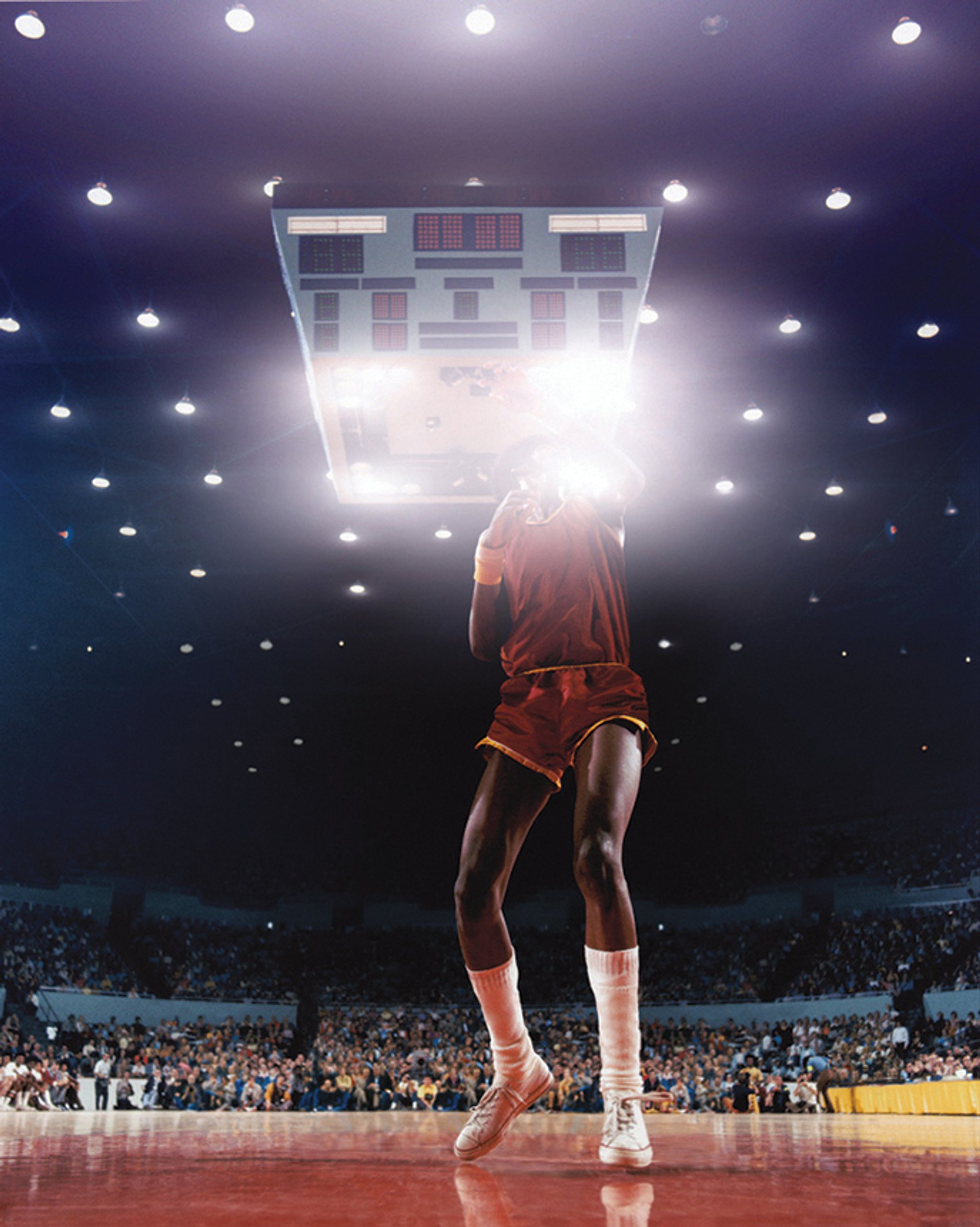
An image from Pfeiffer's basketball-themed photographic series, Four Horsemen of the Apocalypse (2004-18) © Paul Pfeiffer; Courtesy the artist; Paula Cooper Gallery, New York; Carlier | Gebauer, Berlin/Madrid; Perrotin; and Thomas Dane Gallery, London
All of the sound you hear when viewing the piece is a re-performance of the chants, using an actual recording from 1966 as a script for a hired crowd in the Philippines to reproduce. As you walk deeper into the installation, you learn that the connection between video and sound isn’t as you’d expect, and is really an arranged and choreographed sensory phenomenon. It’s an example in which the full embodiment of what’s being produced actually resides in the experience itself. The human receiver, their memories and their senses are as much a part of the object of the film as the digital file or playback device. In playing with overt and subliminal meanings in these spectacles, you have the opportunity to foreground hidden aspects while activating the scenes of national fervour almost to the point of original religiosity.
• Paul Pfeiffer: Prologue to the Story of the Birth of Freedom, Geffen Contemporary at Museum of Contemporary Art, Los Angeles, until 16 June


